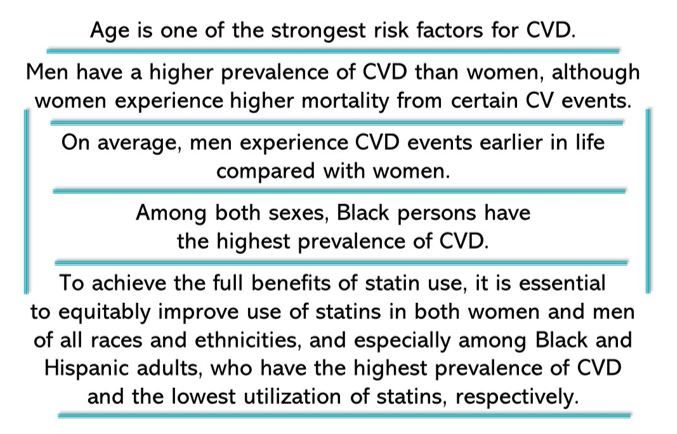USPSTF Updated Guidance on Statin Use in Primary CVD Prevention Similar to 2016 Recommendations
The recommendations guide initiation of statin therapy in persons aged ≥40 years without a history of CVD and no current signs/symptoms of CVD.

The US Preventive Services Task Force (USPSTF) on August 23, 2022, released updated recommendations on the use of statin therapy for primary prevention of cardiovascular disease (CVD) and mortality in adults aged ≥40 years who have no known CVD history and no current signs or symptoms of CVD.
Updates to the guidance are based on a comprehensive review of evidence evaluating the benefits and harms of statin use published since the most recent USPSTF recommendations made in 2016. The new recommendations are consistent with those, according to the task force, and are published in JAMA.
Specifically, the task force recommends prescribing a statin for primary CVD prevention among adults aged 40-75 years who have ≥1 CV risk factors and an estimated 10-year CVD risk of ≥10%. Although the likelihood of benefit is smaller for this next population than in individuals with a 10-year risk of ≥10%, the USPSTF says that clinicians may selectively offer statin therapy for primary prevention to adults aged 40-75 years who have ≥1 CV risk factors and an estimated 10-year risk of 7.5% to <10%.
For adults aged ≥76 years, the task force writes, there is currently insufficient evidence to assess the balance of benefit and harm associated with initiating statin therapy for primary CVD prevention. For these older adults, the clinician’s clinical judgement in combination with shared decision-making is the recommended approach.
The systematic literature review
The task force recommendations are based on a systematic literature review that included 26 studies, with 22 randomized controlled trials with 6 months to 6 years of follow-up comparing statins against placebo or no statin, 1 trial comparing statin intensities, and 3 observational studies reporting harms of statin use.
Overall, the findings suggest that statins were significantly associated with decreased risk of all-cause mortality, stroke, myocardial infarction, and composite CV outcomes. The association with CV mortality, however, was not statistically significant.
Based on the assessment of benefits of statin therapy vs harms, review authors found no statistically significant associations with an increased risk of serious adverse events, myalgias, elevated alanine aminotransferase level, or increased diabetes risk overall. Nor were there indications of increased risk associated with statins and renal or cognitive outcomes.

Data are limited that directly compare the effects of statins of different intensities, the authors note. The majority of studies reviewed used statins of moderate intensity which, based on the evidence, seem “reasonable for the primary prevention of CVD in most persons.”
Analyzed across a range of demographic and clinical variables, the relative benefits of primary CVD prevention with statins did not appear to differ according to sex, and race and ethnicity, or the presence or absence of specific risk factors such as hypertension or diabetes, according to the review.
The authors write that none of the trials included in the review of evidence reported on how benefits of statin therapy vary according to socioeconomic characteristics.
However, in their analysis they note specifically the disproportionate impact of CVD on racial and ethnic minorities, writing that evidence confirms the highest prevalence of CVD among Black adults of both sexes. Moreover, the review cites literature on inequities in statin use based on race and ethnicity, area poverty level, and income level, stating that “… Black and Hispanic adults have the highest prevalence of CVD and lowest use of statins, respectively.”
“Importantly, we are using this final recommendation statement to call attention to inequities in the rates of CVD and in access to and use of statins,” says Task Force member Katrina Donahue, MD, MPH, in a statement from the USPSTF. “It is essential that we work to better understand the causes of these inequities and reverse the negative impacts of systemic racism on cardiovascular health.”
In an editorial on the recommendations published in JAMA Cardiology the writers compare the USPSTF guidance on use of statins with the statin treatment algorithm in guidelines published in 2018 by the American Heart Association, American College of Cardiology, and a group of specialty professional organizations, US and international. The editorialists, Neil Stone, MD, Philip Greenland, MD, and Scott Grundy, MD, PhD, conclude:
“In summary, the new USPSTF recommendations for statin therapy agree with current AHA/ACC/MS [multisociety] guidelines that patients aged 40 to 75 years with a high enough 10-year ASCVD risk merit statin therapy.
“There is disagreement on the recommended thresholds for statin initiation and how the clinician and patient resolve the frequent situation in which a risk estimation makes treatment decisions uncertain.”
Reference: US Preventive Services Task Force. Statin use for the primary prevention of cardiovascular disease in adults: US Preventive Services Task Force recommendation statement. JAMA. 2022;328:746-753. doi:10.1001/jama.2022.13044